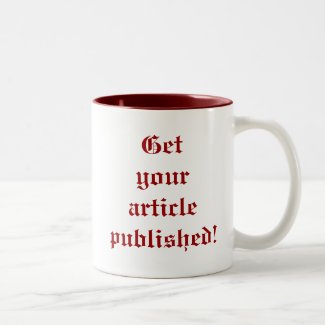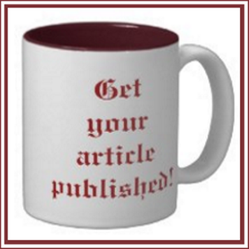Is the article written in clear, correct English?
It will probably not surprise you to hear that articles written in poor English affect the ability for the reviewer to accurately appraise the value of your work. A few typos here and there, and even some small grammar, syntax or styling errors will not detract from the impression made if the manuscript is interesting and of high quality; however, if the English in general is poorly written, then that reflects on the overall impression.
Does the abstract match the content of the article?
This point is of utmost importance. In general, the author/s write and rewrite their papers many times. Cut-copy-paste makes it easy to move paragraphs around, to delete and add in new material, as opposed to how the dinosaurs among us remember having to type and retype, editing by hand. The disadvantage of modern computerization is that the author may forget the extent of changes made and leave the abstract in its original form, no longer appropriate to the much-edited material.
Abstracts should state the purpose of the article, the methods and results if it is an empirical study or review, the conceptual framework if it is a position paper, and the focus of the discussion section.
Are there sufficient subtitles to help the reader understand the organization of the article?
Readers are becoming less and less patient with densely written material. Therefore, it is important to break up the page with subtitles; these help your readers focus on important points as their eyes skim the pages. Use the style manual of your particular profession to know how to format titles and subtitles. Today, style manuals can be found online and no longer need to be purchased.
Is the methodology appropriate to the aims of the study?
It may seem that the design stage and not the writing stage is the proper time to match the methodology to the aims of the study; however, we all know that research does not always turn out as expected. Even when we are writing a position paper or a conceptual exploration, we may find that during the course of our writing our own ideas evolve into something quite different from what they were at the starting point. In a final editing, therefore, check that the description of your methods matches what you actually did. If you changed methods because of developments during the study, it would be helpful to readers to know that. The proper place for discussion of this may be in the "limitations of this study" section of the Discussion. But that depends on the nature of your paper.
Does the material follow a logical procession?
Sometimes with cut-copy-paste, you lose the flow of the paper. There are two ways to pick up on this before submitting the paper for review: either put the paper away for a week or two and then re-read it, or have colleagues go over it for you. Or both.
Are the references cited up-to-date?
One of the first things I do when reviewing a paper that has been submitted for publication is check the references list. I want to see that the author is up on the contemporary literature in the field as well as referring to classic works. The former may be more important than the latter in some cases.
If you are not on a college faculty, then you may not have access to online journals. That does not preclude the necessity to keep up with current publications. I will describe, in a later section in this article, how to get access to papers that are not freely available on the Internet.
Are the conclusions logical and do they stem from the research and/or theoretical presentation of the article?
You may be surprised to know that I have reviewed articles submitted for publication in which the conclusions were not consistent with either the results or the theoretical basis of the work. Because the results of empirical studies and sometimes even the results of our own in-depth contemplation lead us to change our minds about some previously held views, we may need to revamp the entire article to ensure that our conclusions are consistent with the introduction and literature review. Changing our minds, revising our opinions, is a sign of open-mindedness and growth. We sometimes learn more from our errors than when we are proven right about something.
Could the article be shorter and still get the point across?
Longer is not necessarily better. Being able to write concisely and exactly is a skill that is worth cultivating. You should not be writing your manuscript as if you are teaching the subject to novices unless that is its stated purpose, but rather, writing to professionals who keep up with the professional literature. Explain new concepts you are using or recently coined terms, but expect the reader to have a basic grasp of the subject matter. There are text-books and courses for the novice. Your article should aim high.
One exception to this rule might be when you are submitting a paper in one subject to a journal that specializes in a different subject. You would do that only when you feel that professionals in another field would benefit from combining ideas from your area of expertise with their own.
Should the article be expanded in order to fully discuss the necessary points?
While it is important not to be overly verbose, that does not mean scrimping where scrimping harms the quality of your paper.
Does the author present a new idea or a unique synthesis of familiar material?
This cannot be emphasized enough - your paper must contribute to the development of the field. State very clearly both in the abstract and in the Discussion and Conclusions the nature of your contribution - do you turn some accepted idea on its head? do you add a new perspective for future research or practice? does your work ask a question nobody has asked before? does your work combine fields of expertise in a new way? etc.
Is the material relevant to the journal to which it was submitted?
Many reviewers will give serious consideration to a manuscript even if they think it would be better published in a different journal. In this case, they may even recommend journals to which the author can submit for consideration for publication.
I enjoy helping authors put out their ideas and their research and will make recommendations for revisions even in the case that I suggest the journal not accept the manuscript.






 Visiting an Art Gallery With a Two-Year-Oldon 07/27/2015
Visiting an Art Gallery With a Two-Year-Oldon 07/27/2015
 Using the News to Enhance Jewish Identity in Jewish Kidson 07/24/2015
Using the News to Enhance Jewish Identity in Jewish Kidson 07/24/2015
 Xi'an - Not Just Terracotta Warriorson 06/09/2015
Xi'an - Not Just Terracotta Warriorson 06/09/2015
 Sew Your Own Wedding Dress - or Your Daughter'son 02/06/2015
Sew Your Own Wedding Dress - or Your Daughter'son 02/06/2015


Comments
Yes, the article I was looking for. Your article gives me another approach on the subject. I hope to read more articles from you.
Thanks
nice post
<a href="http://www.appslure.com">Appslure</a>
First of all , honestly I do find your blog and website very helpful when it comes to technique and tips. These quires that you have mention are really again very helpful.
I appreciate you for this post.
Thanks so much for saying so, @frankbeswick. It is gratifying to help others succeed.
Sheri, this is a first class article that should be of immense use to people who want to write academic articles.
Over the years, in my profession, I have published articles in "Adolescence", "The Journal of Feminist Family Therapy", "Sexual and Relationship Therapy", and "The Journal of Child Sexual Abuse", to name a few.
Sheri, would you mind mentioning journals in which you managed to publish your articles? You can PM if you want.
Yes, @blackspanielgallery - and each profession has it's own word limit. It is important to take note of this when you open the journal directions to the author.
In scientific journals brevity is important not just because the audience already has the background, but because there is limited space in any journal.